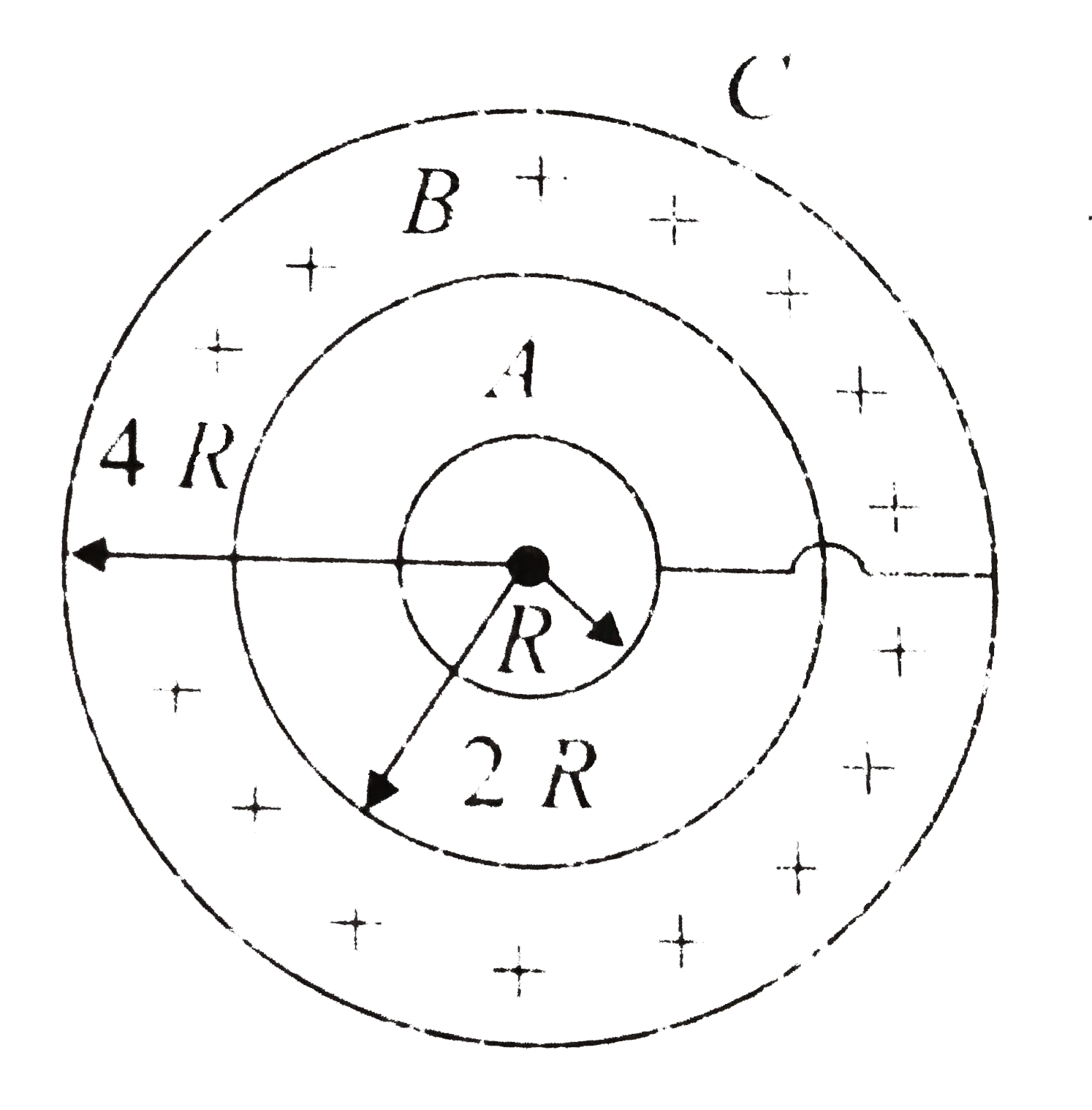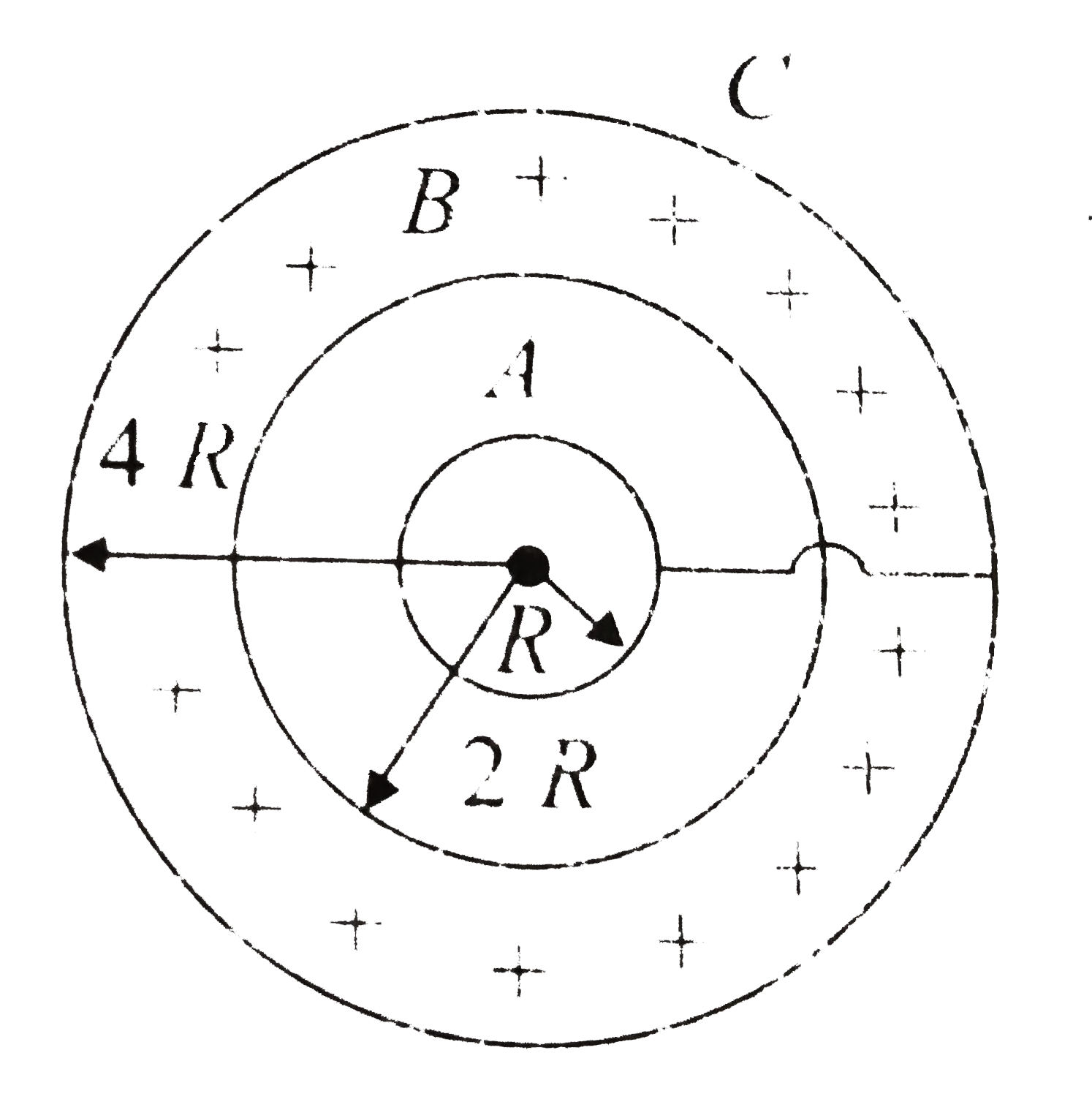Object A, B and C, are three identical, insulated, spherical conductors. Originally, A and B have charges of +3 mC, whereas C has a charge of -6mC. Objects A and C are touched and moved apart, Objects B and C are touched before they moved apart.
(i) If objects A and B are now held near each other they will
(a) attract (b) repel (c ) have no effect on each other.
(ii) If instead object A and C held near each other, they will
(a) attract (b) repel (c ) have no effect on each other.
To solve the problem step by step, we will analyze the interactions between the charged spherical conductors A, B, and C.
Step 1: Initial Charges
- Object A has a charge of +3 mC.
- Object B has a charge of +3 mC.
- Object C has a charge of -6 mC.
Step 2: Touching Objects A and C
When objects A and C are touched, they will share their charges equally because they are identical conductors.
- Total charge when A and C are touched:
Qtotal=QA+QC=+3mC+(−6mC)=−3mC
- Since they are identical, the charge will be equally distributed:
Q′A=Q′C=Qtotal2=−3mC2=−1.5mC
After touching:
- Charge on A: -1.5 mC
- Charge on C: -1.5 mC
Step 3: Touching Objects B and C
Next, we touch objects B and C.
- Charge on B before touching: +3 mC
- Charge on C before touching: -1.5 mC
- Total charge when B and C are touched:
Qtotal=QB+QC=+3mC+(−1.5mC)=+1.5mC
- Again, they will share the charge equally:
Q′B=Q′C=Qtotal2=+1.5mC2=+0.75mC
After touching:
- Charge on B: +0.75 mC
- Charge on C: +0.75 mC
Step 4: Analyzing the Interactions
Now we analyze the interactions when A and B are held near each other and when A and C are held near each other.
Part (i): Objects A and B
- Charge on A: -1.5 mC
- Charge on B: +0.75 mC
Since A has a negative charge and B has a positive charge, they will attract each other.
Part (ii): Objects A and C
- Charge on A: -1.5 mC
- Charge on C: -1.5 mC
Both A and C have negative charges, so they will repel each other.
Final Answers
(i) Objects A and B will attract each other.
(ii) Objects A and C will repel each other.
---
- Object A has a charge of +3 mC.
- Object B has a charge of +3 mC.
- Object C has a charge of -6 mC.
When objects A and C are touched, they will share their charges equally because they are identical conductors.
Qtotal=QA+QC=+3mC+(−6mC)=−3mC
Q′A=Q′C=Qtotal2=−3mC2=−1.5mC
- Charge on A: -1.5 mC
- Charge on C: -1.5 mC
Next, we touch objects B and C.
- Charge on C before touching: -1.5 mC
Qtotal=QB+QC=+3mC+(−1.5mC)=+1.5mC
Q′B=Q′C=Qtotal2=+1.5mC2=+0.75mC
- Charge on B: +0.75 mC
- Charge on C: +0.75 mC
Now we analyze the interactions when A and B are held near each other and when A and C are held near each other.
- Charge on A: -1.5 mC
- Charge on B: +0.75 mC
- Charge on A: -1.5 mC
- Charge on C: -1.5 mC
(i) Objects A and B will attract each other.
(ii) Objects A and C will repel each other.
Topper's Solved these Questions
- COULOMB LAW AND ELECTRIC FIELDBOOK - CENGAGE PHYSICS ENGLISHCHAPTER - COULOMB LAW AND ELECTRIC FIELDEXERCISE - Solved examples
10 Videos
- COULOMB LAW AND ELECTRIC FIELDBOOK - CENGAGE PHYSICS ENGLISHCHAPTER - COULOMB LAW AND ELECTRIC FIELDEXERCISE - Exercises
58 Videos
- CENGAGE PHYSICS DPPBOOK - CENGAGE PHYSICS ENGLISHCHAPTER - CENGAGE PHYSICS DPPEXERCISE - subjective type
51 Videos
- ELECTRIC CURRENT & CIRCUITSBOOK - CENGAGE PHYSICS ENGLISHCHAPTER - ELECTRIC CURRENT & CIRCUITSEXERCISE - Kirchhoff s law and simple circuits
15 Videos
Similar Questions
Consider three identical metal spheres A,B and C. Sphere A carries charge +6q, sphere B carries charge −3q and sphere C carries no charge . Spheres A and B are touched together and then separated. Sphere C is then touched to sphere A and separated from it . Finally the sphere C is touched to sphere B and separated from it . Find the final charge on the sphere C.
View SolutionTwo point charge +2C and +6C repel each other with a force of 12N . If a charge of −4C is given to each other of these charges , the force will now be
View SolutionIn Figure, two circles with centres A and B touch each other at the point C . If AC=8 cm and AB=3 cm , find the area of the shaded region.
View SolutionFigure shows three concentric thin spherical shells A, B and C of radii a, b, and c. The shells A and C are given charge q and -q, respectively, and shell B is earthed. Then,
View SolutionThe electric field lines are closer together near object A than they are near object B. We can conclude that.
View SolutionThree concentric spherical conductors A, B, and C of radii r, 2R, and 4R, respectively. A and C is shorted and B is uniformly charged (charge +Q).

Charge on conductor A is
View SolutionThree concentric spherical conductors A, B, and C of radii r, 2R, and 4R, respectively. A and C is shorted and B is uniformly charged (charge +Q).

Potential at B is
View SolutionIf ABC is isosceles with AB=AC and C(O, r) is the incircle of the ABC touching BC at L , prove that L bisects BC .
View SolutionThree identical metallic uncharged spheres A, B and C of radius a are kept on the corners of an equilateral triangle of side d(d>>a). A fourth sphere (radius a) which has charge Q touches A and is then removed to a position for away. B is earthed and then the earth connection is removed. c is then earthed. The charge on C is
View SolutionThree concentric spherical conductors A, B, and C of radii r, 2R, and 4R, respectively. A and C is shorted and B is uniformly charged (charge +Q).

Potential at A is
View Solution
